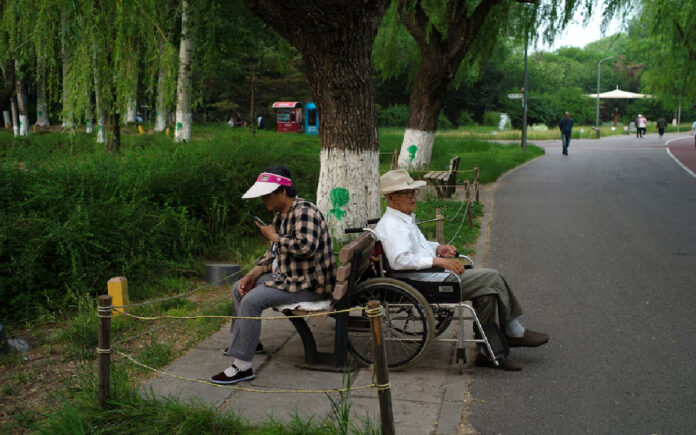Beijing: China’s population decreased for the third consecutive year in 2024, as the number of deaths surpassed a modest increase in births. Experts warn that this trend is likely to intensify in the years ahead.
According to data released by the National Bureau of Statistics, China’s total population dropped by 1.39 million to 1.408 billion in 2024, compared to 1.409 billion in 2023. This decline further heightens concerns about the country’s future economic stability, with fewer workers and consumers expected to place increasing pressure on the already strained economy. The rise in costs related to elderly care and retirement benefits could exacerbate financial burdens on local governments, already grappling with significant debt.
In 2024, the number of births in China increased slightly to 9.54 million from 9.02 million in 2023. The birth rate rose to 6.77 births per 1,000 people in 2024, compared to 6.39 per 1,000 in the previous year. However, the number of deaths in 2024 was 10.93 million, down from 11.1 million in 2023.
The ongoing decline in birth rates is a long-term trend, linked to the one-child policy that China enforced from 1980 to 2015, alongside rapid urbanization. Like neighboring Japan and South Korea, many Chinese people have migrated from rural areas to cities, where raising children is more costly. Additionally, the high expenses associated with childcare and education, combined with economic uncertainty and a slowing economy, have discouraged many young people from marrying and starting families.
Gender discrimination and societal expectations that women bear the burden of domestic responsibilities also exacerbate the situation, according to demographers.
“Much of China’s population decline is rooted in entrenched structural reasons: Without fundamental structural transformations—from enhancing the social safety net to eliminating gender discrimination—the trend of population decline cannot be reversed,” said Yun Zhou, an assistant professor of sociology at the University of Michigan.
Also Read | Taiwan Warns Beijing: No Dialogue with Lai’s Administration Is Unacceptable
A notable rebound in births in 2024, attributed to a 12.4% increase in marriages in 2023, was primarily driven by delayed weddings due to the COVID-19 pandemic. However, demographers predict that marriage rates—and consequently, birth rates—will likely decline again in 2025. Marriages in China are closely tied to birth rates, as single women often lack access to child-raising benefits.
In response to the population crisis, the Chinese government unveiled a series of measures in 2024 aimed at boosting the birth rate. In December, authorities called on colleges and universities to incorporate marriage and “love education” into their curricula, promoting positive views on marriage, family, and fertility. The state council also rallied local governments in November to direct resources toward addressing the population decline and to spread respect for childbearing and marriages at “the right age”.
Also Read | Rare Bird Strike on Both Engines Leads to South Korea’s Deadliest Aviation Disaster
By the end of the century, China’s population of women of reproductive age (15–49 years) is expected to shrink by more than two-thirds, dropping to fewer than 100 million, according to the United Nations. At the same time, the population aged 60 and over is projected to exceed 400 million by 2035, up from approximately 280 million today.
The Chinese Academy of Sciences has warned that the pension system is likely to run out of funds by 2035, further compounding the challenges associated with an aging population. In 2024, 22% of China’s population, or 310.31 million people, were aged 60 or older, up from 296.97 million in 2023. Meanwhile, urbanization continued, with the number of people living in cities increasing by 10.83 million to reach 943.3 million, while the rural population declined to 464.78 million.



